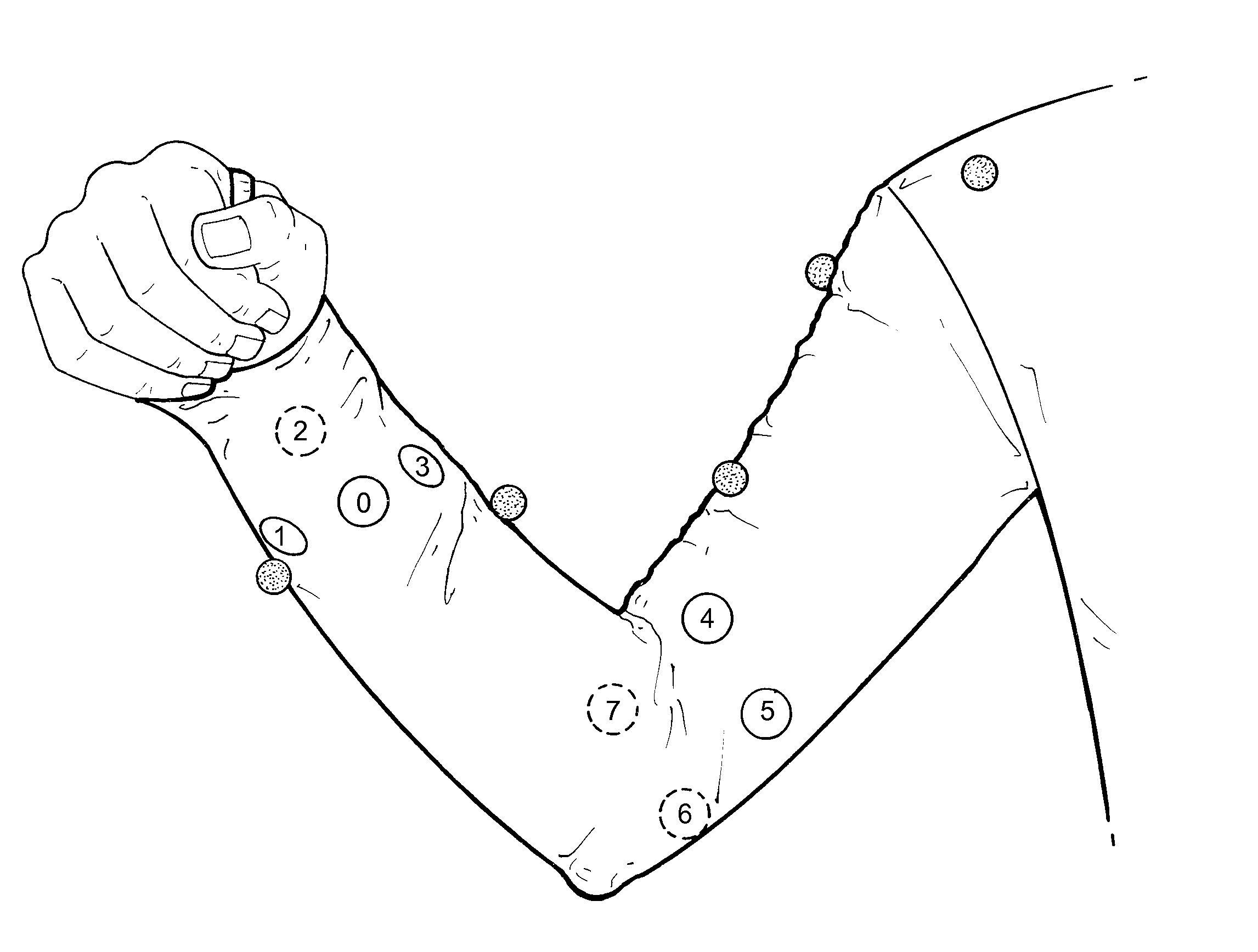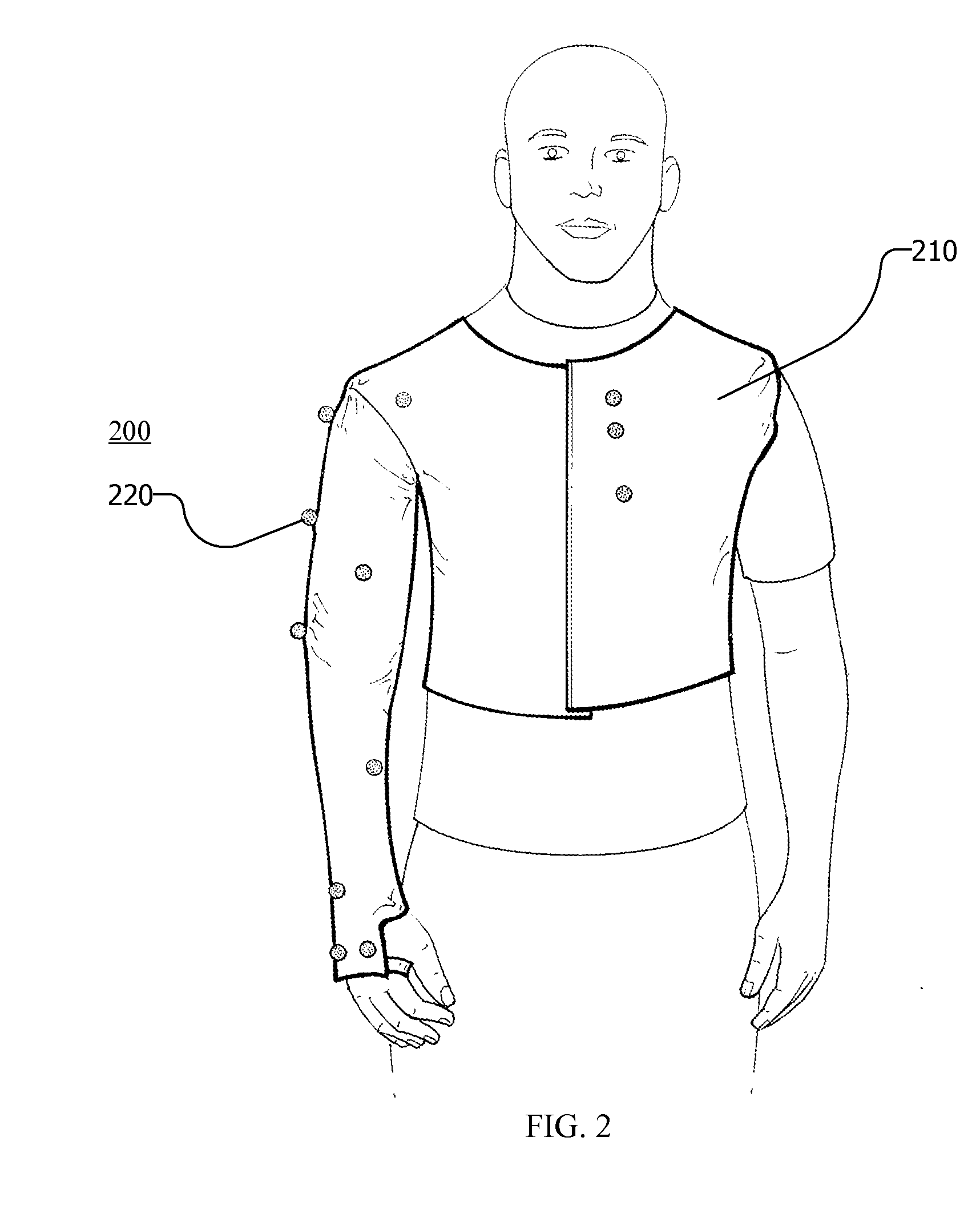Motor Learning And Rehabilitation Using Tactile Feedback
a technology applied in the field of motor learning and rehabilitation using tactile feedback, can solve the problems of inability to provide real-time feedback, more injury to the body, and long learning time of learning this control
- Summary
- Abstract
- Description
- Claims
- Application Information
AI Technical Summary
Benefits of technology
Problems solved by technology
Method used
Image
Examples
Embodiment Construction
[0035]Throughout this description, the embodiments and examples shown should be considered as exemplars, rather than limitations on the apparatus and methods disclosed or claimed.
[0036]An augmented sensory feedback system is described. One apparatus is a lightweight comfortable wearable tactile feedback device that utilizes the communication channel of direct touch on the body, to give real-time feedback to the wearer about their performance in motor skill tasks. Using tactile signals to indicate joint error in a user's motion, we enable a user to wear a full-body suit that provides subtle cues for the brain, as they perform a variety of motor skill tasks. Tactile real-time feedback may act as a dance teacher or physical therapist does: by giving muscle aid through informational touch cues, not only through force or torque. This may enable people to undergo constant therapy / training, over all joints of the body simultaneously, with higher accuracy than a therapist / teacher provides.
[...
PUM
 Login to View More
Login to View More Abstract
Description
Claims
Application Information
 Login to View More
Login to View More - R&D
- Intellectual Property
- Life Sciences
- Materials
- Tech Scout
- Unparalleled Data Quality
- Higher Quality Content
- 60% Fewer Hallucinations
Browse by: Latest US Patents, China's latest patents, Technical Efficacy Thesaurus, Application Domain, Technology Topic, Popular Technical Reports.
© 2025 PatSnap. All rights reserved.Legal|Privacy policy|Modern Slavery Act Transparency Statement|Sitemap|About US| Contact US: help@patsnap.com



